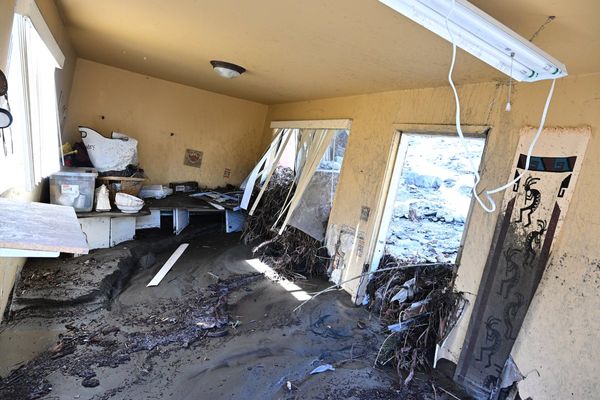
Aid workers are demanding “safe, unimpeded” access to hundreds of thousands of people forced to leave their homes in Ukraine, amid warnings that the number of people displaced within the country by the Russian invasion could reach nearly 7 million.
On Friday, the UN said 1.85 million people had been displaced internally by the conflict, a figure widely believed to be an underestimate in a highly volatile and rapidly changing security situation.
With the flow of people fleeing westwards likely to intensify in coming days, humanitarian workers said in many cases they had been unable to get aid to the most vulnerable within Ukraine.
Sam Smith, spokesperson for the International Committee of the Red Cross, said with Ukrainian Red Cross colleagues, they had delivered supplies to some locations. “But this is just a drop in the ocean when we are faced with skyrocketing levels of need,” he said.
“We want to do more, but security is making operations incredibly challenging,” he added. “We face great difficulties in being able to move the needed supplies. This is an extremely dangerous time for families caught in the fighting and an extremely dangerous time for aid organisations, too.”

Joe Lowry, spokesperson for the International Organization for Migration, said UN colleagues and partners were trying to deliver aid “whenever and wherever possible”.
But he added: “We need safe, unimpeded access to all areas affected by Russia’s military offensive. It’s essential to establish a pause in the fighting to allow for the safe passage of civilians caught in conflict to leave on a voluntary basis in the direction they choose and to ensure lifesaving humanitarian supplies can move in for those who remain.”
Even before the invasion, there were an estimated 1.46 million internally displaced people (IDPs) in Ukraine, of whom 854,000 were in government-controlled areas in the east of the country.
Since 24 February, hundreds of thousands of people have been on the move, mainly from the east, north and south of the country to the relatively calm west.
At the same time, more than 2.5 million people have left the country. But, while they have been met with an extensive refugee relief effort, those inside the country have been facing increasingly dire conditions and patchy humanitarian support as relief efforts have been stymied by the violence.
Except for an evacuation of people from the eastern city of Sumy, attempts to arrange humanitarian corridors for civilians and the passage of aid have largely failed. “Targeted attacks on civilians and civilian infrastructure and lack of safe passages are … posing serious threats to the lives of thousands of civilians attempting to flee the hostilities,” the UN warned.

Russia has denied targeting civilians in what it calls its “special military operation”.
According to the UN, the war could displace up to 6.7 million people within Ukraine, 4.3 million of whom will need life-saving humanitarian assistance.
For the moment, western oblasts such as Zakarpatska, Lviv and Ivano-Frankivsk have been hosting the greatest numbers of IDPs, with the city of Lviv – believed to have taken in about 200,000 people – approaching “breaking point”, the UN says.
Many people have been sheltering in cramped and overcrowded centres where access to electricity and water is limited. The World Health Organization has warned that infectious diseases such as Covid-19, measles or cholera could flourish in such conditions.
But, according to the UN, even this inadequate shelter could soon become unavailable to many. “Given the continuous growth of the displaced population, [it is expected that] local authorities will face the lack of premises to host new arrivals shortly,” it warned.

Adib Fletcher, director of humanitarian response at Project Hope, a global health and relief organisation, said in comparison with the refugee crisis unfolding beyond Ukraine’s borders the situation for IDPs was “a more difficult context … [with] a lot of different moving parts”.
“I think that the sky’s the limit in terms of the actual healthcare needs at this stage within Ukraine,” he added.
Data collected by UN partners found that women and children, people living with disabilities, older people and minority groups make up the majority of those displaced. Most IDPs came from the regions around the two biggest cities, Kyiv and Kharkiv. On Thursday, the mayor of Kyiv said about half the capital’s population had left, while most of Kharkiv’s 1.5 million inhabitants are thought to have fled the relentless Russian shelling.
Alexandra Bilak, director of the internal displacement monitoring centre at the Norwegian Refugee Council, said it had been “virtually impossible” to quantify the scale of the IDP crisis, “mostly due to the fact that the situation changes from day to day and from hour to hour, [and] there are very few people who have the capacity or even the mental space to keep track.”
Given the huge numbers involved, she added, there were serious questions over the ability of other towns and cities to manage new arrivals. The potential for sustainable solutions to the crisis was “like a dot on the horizon”, she said.







